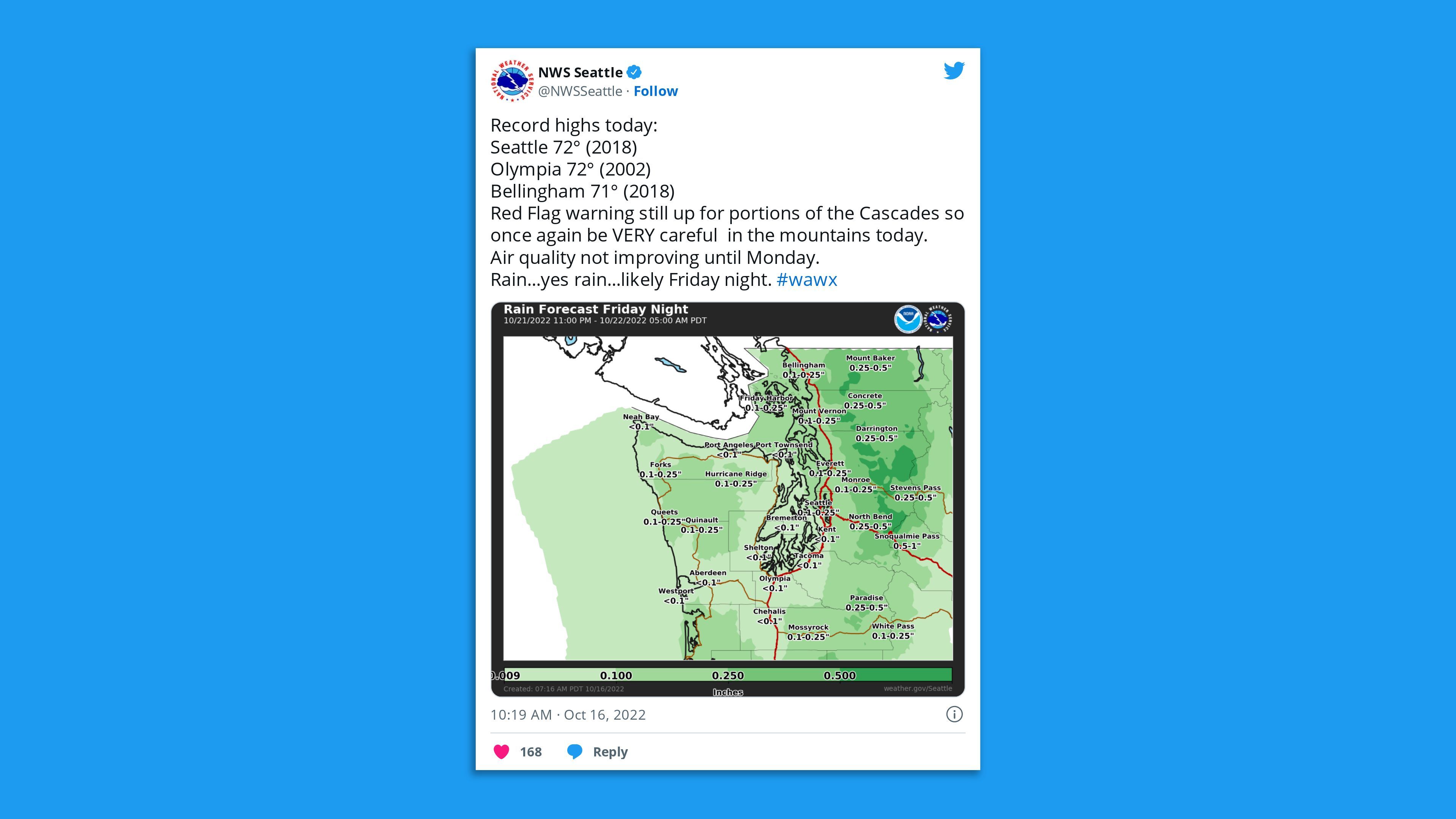A wind-driven wildfire exploded to 2,000 acres overnight before diminishing slightly to roughly 1,500 acres in southwest Washington state as authorities ordered evacuations for thousands of homes.
The latest: By Monday night, the Nakia Creek Fire was burning across some 1,165 acres and was 5% contained. Evacuation zones had shrunk since Sunday, according to the Clark Regional Emergency Services Agency. "Smoke was very heavy yesterday and even grounded aircraft fighting the fire," the agency said in an update.
Thought bubble, via Axios' Andrew Freedman: The most dangerous wildfire weather conditions, which helped propel several large blazes in Washington state this weekend, have begun to shift. Slightly cooler, more humid air is present in western Washington in particular, helping firefighters to battle the flames.
- The strong easterly winds that dried out vegetation and yielded extreme fire behavior this weekend have died down. Temperatures are expected to remain milder than average through midweek, and by late this week, much cooler and rainy fall weather is forecast to arrive in the Pacific Northwest.
The big picture: There's an unusually high number of wildfires burning in the Pacific Northwest, Intermountain West and Canada, as much of the Western United States faces "above normal temperatures and minimum relative humidity," per the National Inter Agency Fire Center.

- There are "record high temperatures, dry weather, wildfire concerns and air quality issues across the Pacific Northwest continues," the National Weather Service said in a forecast update on Monday morning.
By the numbers: Washington's Nakia Creek Fire, near Camas, east of Vancouver, which prompted Sunday's evacuation orders, is one of 72 large fires in the U.S., according to the NIFC's latest data.
Zoom in: Smoke from that Washington wildfire in eastern Clark County that's razed some 2,000 acres was "visible throughout the metropolitan area that Vancouver shares with Portland, Oregon," AP notes.
- An air quality advisory remained in place for Metro Vancouver and the Fraser Valley in southwestern British Columbia due to wildfires in Washington and Canada, per a Metro Vancouver tweet Sunday evening.

Zoom out: 24 large fires were burning in Idaho, 22 in Montana, 14 in Washington and seven in Oregon, per the NIFC data.
- Oklahoma has four large fires and California one — the monster Mosquito Fire that's been active for 40 days, but which is now 95% contained.
Context: Scientific research shows climate change is a key factor in wildfire risk.
- Much of the U.S. West is in the grip of a climate change-driven drought, which has exacerbated fire risk, per Axios' Andrew Freedman.
What we're watching: "The Northwest will remain warmer than normal over the next few days thanks to the continued presence of a staunch upper-level ridge," the National Weather Service said in an outlook update on Monday morning.
- "Some records may be tied or broken over the Pacific Northwest and Northern Rockies on Tuesday."
Editor's note: This article has been updated with new details throughout.






